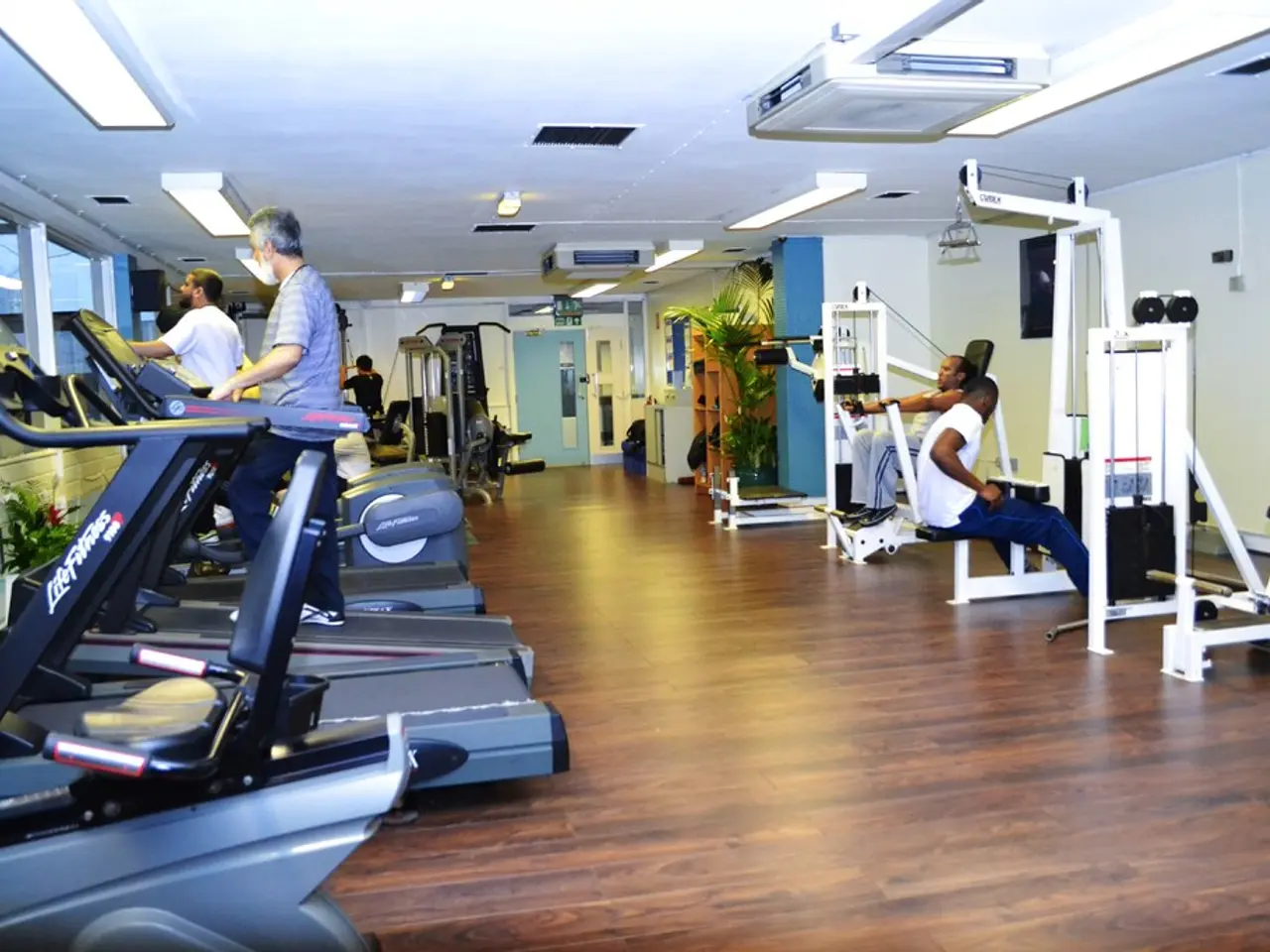Prime years for women to minimize stroke risk during midlife.
In a groundbreaking study published this month by researchers at Harvard's T.H. Chan School of Public Health, it has been confirmed that middle-aged women can significantly lower their stroke risk by making simple lifestyle modifications. The study, which followed nearly 60,000 women from an average age of 52 for 25 years or more, found that up to 80% of strokes are preventable through these individual changes.
The research emphasises the importance of adopting a healthy, balanced diet, increasing regular physical activity, quitting smoking and avoiding vaping, managing stress effectively, maintaining a healthy weight, and focusing on heart-healthy routines in daily life.
Emphasising plant-based foods such as vegetables, fruits, whole grains, beans, and legumes, along with lean meats, fish, low-fat dairy, and heart-healthy fats like olive oil, is key. Diets like the DASH and Mediterranean diets are linked to reduced stroke risk. Nutrients such as potassium, omega-3 fatty acids, polyphenols, and magnesium help lower blood pressure, improve artery flexibility, and reduce clotting.
Incorporating movement daily, such as walking (aiming for at least 7,000 steps per day), biking, or taking stairs, reduces stroke risk. Even small increases in activity can improve vascular health. Sitting for prolonged periods is associated with increased stroke risk, so frequent movement is recommended.
Ceasing nicotine use greatly lowers stroke risk, and avoiding vaping is also important as it introduces harmful substances into the blood circulation.
Chronic stress contributes to cardiovascular risk, so integrating stress management techniques is beneficial in stroke prevention. Maintaining a healthy weight, diets lower in calorie density that promote gradual weight loss, lead to improved stroke risk profiles.
Dietary modifications, such as eating more fish, nuts, whole grains, fruits and vegetables, less red meat and alcohol, and no processed meats, are estimated to reduce the risk of total stroke by 23%. Limiting processed foods, added sugars, and alcohol also help decrease inflammation and clot risk.
Engaging in the three non-dietary interventions (smoking cessation, daily exercise, and weight loss) is estimated to reduce the risk of total stroke by 25% and ischemic stroke by 36%.
The study looked at the impact of smoking cessation, gradual weight loss where necessary, and exercising thirty minutes or more daily on stroke risk. During the 26-year follow up, 7% of women with no lifestyle interventions had a stroke, with 2.4% having an ischemic stroke, and 0.7% having a hemorrhagic stroke.
It is crucial to remember that if you are experiencing any symptoms of a stroke, such as sudden and severe onset of numbness or weakness in the face, arm, or leg, confusion, trouble speaking or understanding speech, vision problems in one or both eyes, difficulty walking, dizziness, loss of balance or other problems with coordination, or a severe headache with no known cause, call 911 immediately. Minutes count if you're having a stroke.
Wanda Sturtz, a woman who made lifestyle changes after suffering a stroke at the age of 46, emphasises the importance of taking action. Despite still not having feeling on the right side of her body and having trouble hearing in one ear, a year after her stroke, she is grateful for the changes she made in the hopes of preventing another one.
In summary, key lifestyle changes for middle-aged women to lower stroke risk include adopting a healthy diet (DASH/Mediterranean), increasing regular physical activity, quitting smoking and avoiding vaping, managing stress effectively, maintaining a healthy weight, and limiting processed foods, added sugars, and alcohol. Implementing these evidence-based lifestyle changes supports comprehensive stroke prevention in middle-aged women.
- Adopting a healthy, balanced diet that includes plant-based foods, lean meats, fish, low-fat dairy, and heart-healthy fats, while limiting processed foods, added sugars, and alcohol, is key in stroke prevention.
- Dietary modifications, such as eating more fish, nuts, whole grains, fruits, and vegetables, and less red meat, alcohol, and processed meats, are linked to reduced stroke risk.
- Incorporating movement daily, such as walking, biking, or taking stairs, and avoiding prolonged sitting periods, can lower stroke risk and improve vascular health.
- Ceasing nicotine use and avoiding vaping are essential in reducing the risk of stroke, as nicotine and vaping introduce harmful substances into the blood circulation.
- Implementing lifestyle changes like smoking cessation, daily exercise, and maintaining a healthy weight can significantly lower the risk of a stroke; the study showed that these interventions could potentially reduce the risk of total stroke by 25% and ischemic stroke by 36%.




